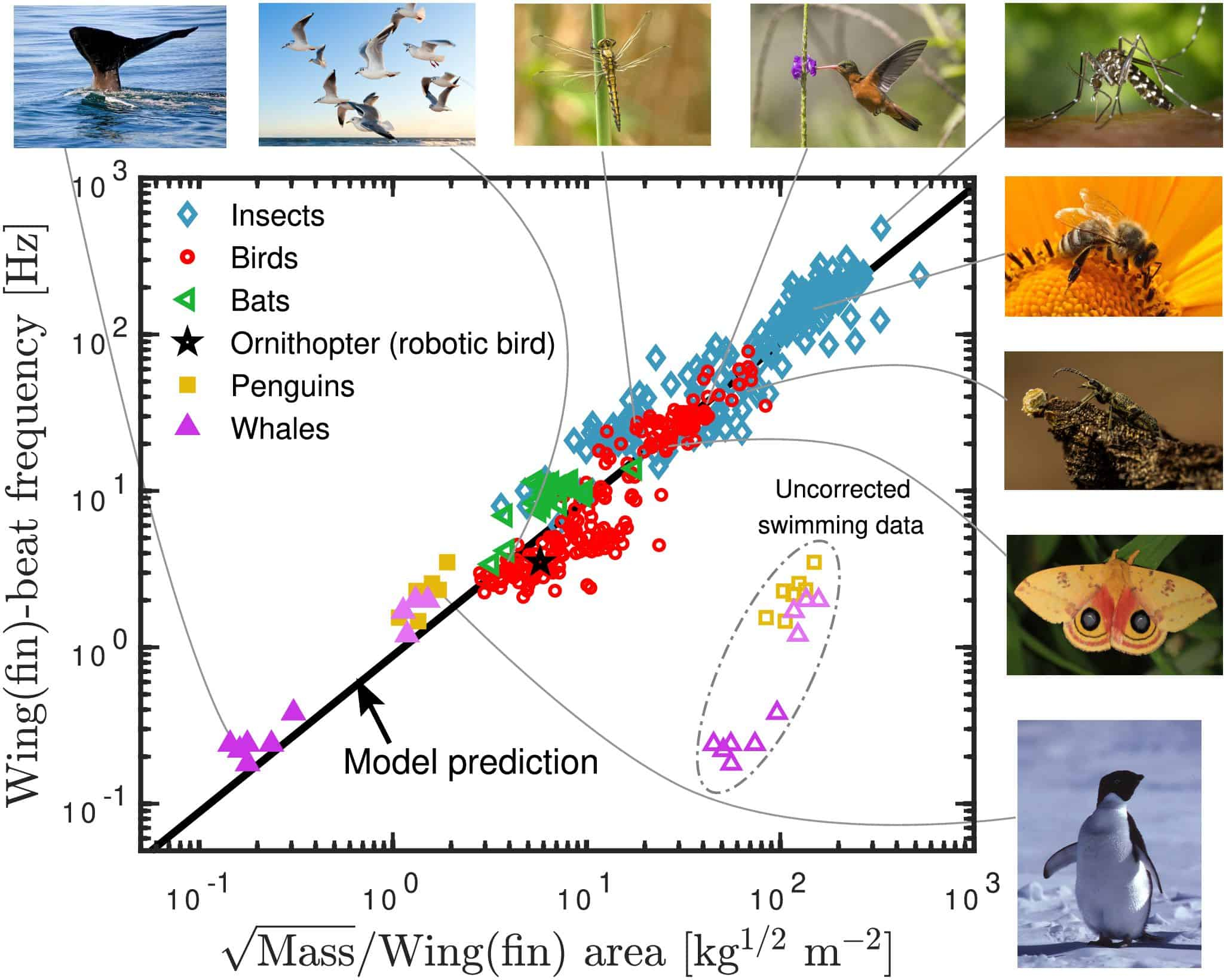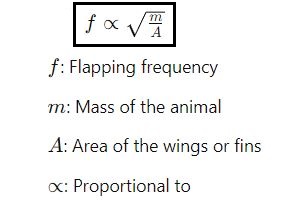Note4Students
From UPSC perspective, the following things are important :
Prelims level: Flapping Frequency

Why in the news?
- Researchers at Roskilde University in Denmark discovered a formula that correlates the flapping frequency of winged and swimming animals to their mass and wing/fins size.
- The formula applies universally across a diverse range of species, from insects to birds, bats, penguins, whales, and even robotic ornithopters.
Formula for Flapping Frequency

- The formula was derived from Newton’s second law (F= mass x acceleration) applied to animals flapping wings to stay airborne.
- Factors considered in the derivation included air density, wing size, and the forces generated by wing movements.
Research Methodology
- The researchers derived the formula theoretically from Newton’s second law, relating the force needed to stay airborne or submerged to the wing/fins’ motion, air/water dynamics, and animal mass.
- They incorporated empirical observations into a constant C to account for specific shape and flight kinematics variations.
Application and Validity
- The formula’s validity was tested across various animals:
- 176 insect data points (e.g., bees, moths, dragonflies)
- 212 bird data points (from hummingbirds to swans)
- 25 bat data points
Formula Extension to Swimming Animals
- The formula also predicts the frequency of fin/fluke movements in swimming animals.
- Adjustments are made for water density and buoyancy effects, excluding fish with swim bladders.
Limitations and Modifications
- The formula applies well in conditions with high Reynolds numbers (Re), where fluid flow is streamlined.
- At low Re values, where viscosity dominates, modifications are needed.
- The equation holds as long as animal density variations do not exceed a factor of ten.
Insights and Future Research
- Insights from the formula include understanding flight efficiency and potential evolutionary pathways for winged animals.
- Future research aims to explore further insights hidden within the C constant, potentially revealing deeper principles governing animal flight and swimming dynamics.
PYQ:[2024] The organisms “Cicada, Froghopper and Pond skater are: (a) Birds (b) Fish (c) Insects (d) Reptiles |
Get an IAS/IPS ranker as your 1: 1 personal mentor for UPSC 2024
